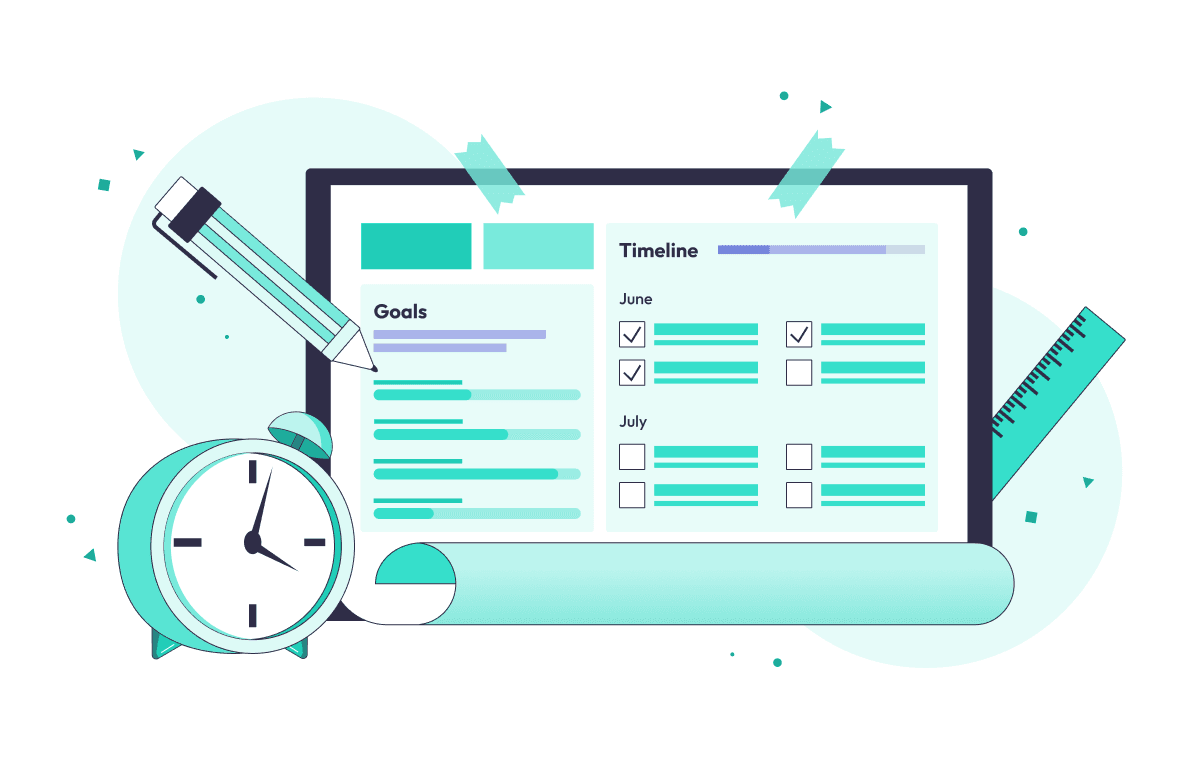Updated Nov 08, 2024 6 min read
What is a Test Plan and How to Write a Test Plan for Software Testing?
Documentation is typically not an easy task, but it is always crucial. In this article, we will explore the meaning of a test plan, its necessary components, and how it differs from a test strategy.

What are Test Plan and Test Strategy for Software Testing
Everyone who helps make software or works with it knows that the process of testing is an important part of putting a project into action. But not to miss anything during software testing planning, you need to consider many factors: what strategy to choose, what goals to achieve, and how to calculate the resources and schedules. In this article, you can find answers to all these questions and methods for building a test plan in software testing. You can also read our article about how to create a test plan for software testing for comprehensive guidance on developing a robust testing strategy.
What is Test Plan, Test Strategy, and What Are Their Differences
Test Plan
A test plan for software is a written document that specifies the purpose, priorities, procedures, and impact of software testing. Such plans are usually created using the IEEE 829 standard. IEEE is an international organization that creates globally accepted templates for documents. The IEEE 829 standard defines the format of the documents required for each level of software testing processes. You can also read our article about QA documentation for comprehensive insights into the importance of documenting your quality assurance processes.

But why is the software testing plan so important? Teams that use this approach have several advantages over those that ignore the planning step.
1. Good planning is already half the work done. If all your QA testing is thought out and planned, then there is no place for uncertainty in your project. Everyone in the team understands the tasks and the stages of implementation.
2. It aids in estimating the amount of work and time required to verify the application's quality.
3. Help developers, business managers, and customers — inside and outside the test team — understand the testing specifics.

If you want to improve the quality of your product, start testing today! Fill out our form
Test Strategy in Software Testing
Test strategy usually refers to a set of principles by which tests are built and designed. It also helps determine the type of software testing. The most important part of a good test strategy is figuring out how to handle different testing processes, such as quality assurance, traceability, reliability, and better planning.
Many small companies or startups try to work without these documents. Because of this, they often have problems with the organization of work and confusion among the team during the testing implementation. The risk of releasing a low-quality product is also being considered. If you're looking how to create a test strategy for your project, our article can provide valuable insights and guidance.
Difference
Now we can define the main things that distinguish a test plan and test strategy.

Choosing and Creating a Test Strategy in Software Testing
Testing strategy in software testing is also essential. This section influences the quality of software testing. Developing a test strategy document consists of four parts, where risks, problems, and logistics will be faced.

The Best Way to Draft a Test Plan Document
A good plan makes it easier to figure out where the risk areas are, how to schedule testing, and how to use resources most effectively. The test plan becomes a useful document that can be used as a guide at any time during the development of the product. Let’s look at the components of an ideal test strategy. Each component is critical and needs to be implemented at all times.
Schedule
Scheduling is a broad term that applies to more than just project management. Making a testing schedule that works well and is easy to follow speeds up the process, improves its quality, and keeps costs in check. For correct scheduling, it is required to consider many factors, among them the deadline, working days, and availability of resources.
For this stage, it is necessary to consult with the team to better understand the people with whom you work. Sometimes it is better to define clear boundaries or think of the product's volatility and set more flexible deadlines.
A good schedule should contain answers for each of these questions:
- What is the work schedule of the employees and the project’s deadline?
- How many working days, and what is the availability of resources?
- How does the Test Manager evaluate the time frame of a project?
- What risks may appear during the work on the project, and how long will it take to eliminate them?
Analyze the Product
The initial aspect of any test plan is product analysis. Of course, software testing is only possible if you know about the product itself. To make it easier to get started, you should answer the following questions:
- Who will use this software?
- What software/hardware is used?
- What is this software for?
- How will this software work?
For answers to all these questions, you can read the product documentation. It is also a suitable method to conduct an interview with a developer or with another member of the development team.
Specify the Test's Goals
Your overall goal is to pass the software test process as quickly as possible and perform it productively and efficiently. The purpose of software testing in software engineering is to find all sorts of holes and problems and ensure that the object of testing no longer contains errors. You should do the two procedures listed below to determine the testing targets.
- List all the software features which may need to be tested.
- Define the target or goal of the test based on the above features.
Establish Test Criteria
Test criteria are the rules and points on which the software test process will be based. There are two different types of criteria:

1. Suspension Criteria — as can be inferred from the name, these are criteria that suspend the verification process until the criterion is eliminated.
2. Exit Criteria — this criterion is similar to the previous one and completes the testing process. It requires test score targets that slowly move the project into the next development phase.
Resource Planning
A resource plan is a list of the resource your team will need to complete a project task. Resources come in many types, such as people, equipment, and materials. It helps determine the exact amount of resources to be used.
Test Plan Template
An essential aspect of software testing plans is the selection of the correct template or the use of a template established in the company. If your organization doesn’t have such standards, such samples can be found in industry publications focused on software testing
Test Environment
It is also where the test scripts will be executed. To determine the environment, you should complete all the previous points well and work closely with the development and test teams.
Test Deliverables
We have come to the key moment when you should draw conclusions and show the results. Test deliverables is a test plan document or tool that needs to be finalized and tested again. Some deliverables are produced during and after the test itself.
Conclusions
The main thing to understand is that the first test plan that you will write is the most difficult. We can conclude that test planning in software testing should not be ignored. Testing is an essential and complex process that consists of many details that are worth considering. It guarantees that everyone in your team is working toward the same objective and that nothing falls through the cracks along the way. After carefully reading this article, you have learned how to make a test plan, what a software test process includes, and how to arrange it correctly. To start creating this document, we recommend downloading the IEEE 829 standard and reviewing what is necessary for planning the testing of your project.
Our team is here to assist you with any questions you may have about our services or your project. Talk to our team and let us help you achieve your goals. We look forward to hearing from you!
Comments
There are no comments yet. Be the first one to share your opinion!
For 8 years, we have helped more than 200+ companies to create a really high-quality product for the needs of customers.
- Quick Start
- Free Trial
- Top-Notch Technologies
- Hire One - Get A Full Team
Was this article helpful to you?
Looking for reliable Software Testing company?
Let's make a quality product! Tell us about your project, and we will prepare an individual solution.
FAQ
A test plan is a detailed document that outlines the scope, approach, resources, and schedule of intended testing activities. It specifies testing objectives, criteria for success, and deliverables.
A test plan ensures that there's a structured approach to testing, helps stakeholders understand the scope of testing, and aids in tracking progress and results.
Test plans should be reviewed and updated regularly, especially when there are significant changes in project requirements, scope, or when new information becomes available after initial testing.
Key components often include introduction, test objectives, test scope, features to be tested (and not tested), test approach/strategy, test deliverables, roles & responsibilities, schedule, and exit criteria, among others.
This is determined by the 'exit criteria' defined in your test plan. It could be based on factors like reaching a certain test coverage, achieving a specific number of passed tests, or not finding high-severity defects for a defined period.




